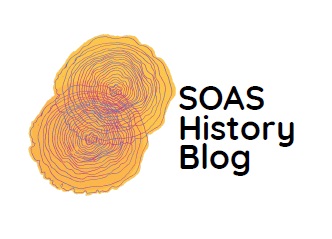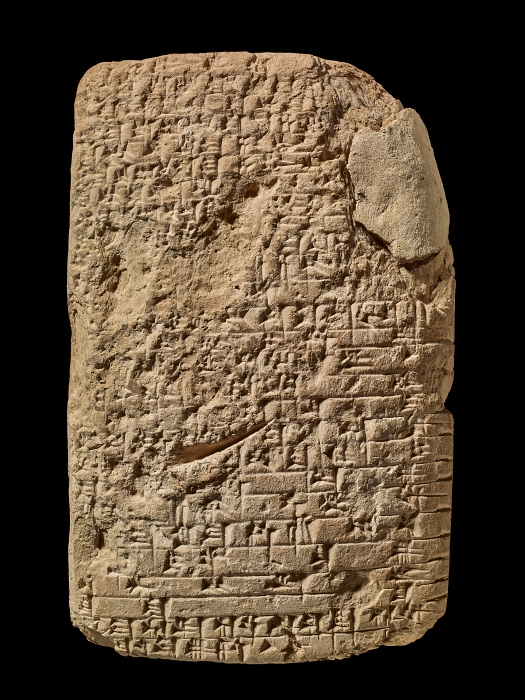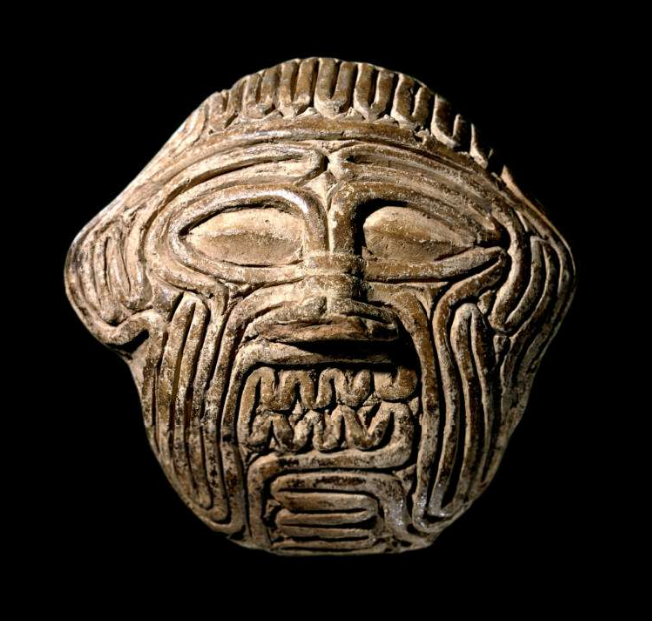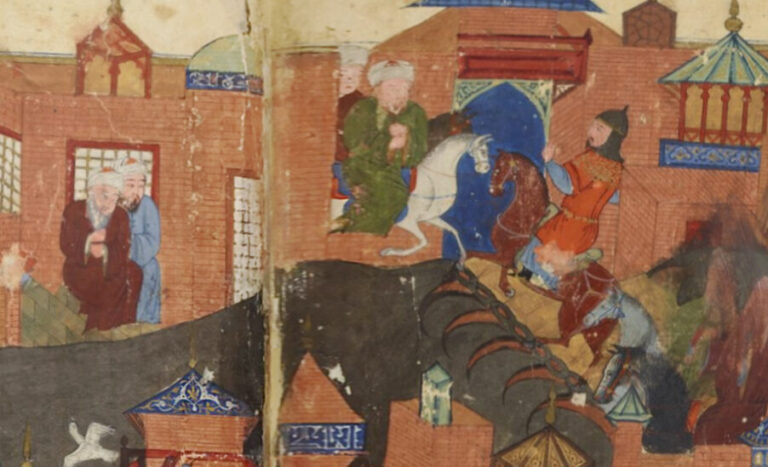The 1951 Oil Strike in Iran: Student–Worker Solidarity Against Colonial Capitalism
by Mattin Biglari
On 22 March 1951, employees of the Anglo-Iranian Oil Company (AIOC, later to become BP) began a strike in the port of Bandar Mahshahr in Southwest Iran. Over the next few days and weeks, thousands more joined across the company’s areas of operations in the oil-rich province of Khuzestan, especially in the refinery town of Abadan. Lasting over a month, the strike succeeded in halting the flow of oil in the Abadan refinery – the largest in the world at the time – and demonstrated the power of local mobilisation in disrupting a significant node of global capitalism. As this post will show, this strike illustrates the importance of solidarity between students and workers in a time of industrial action, even when their demands and struggles may appear separate on the surface.
The timing of the strike was no coincidence: it was a linked to a long-running struggle against colonial capitalism. It came just two days after the Iranian parliament had passed the oil nationalisation bill, which would expel the oil company fifty years after the infamous D’Arcy concession, granted by the Iranian government for exploiting oil in the country’s south. Over the following decades, the oil company assembled its operations as a colonial actor. It dispossessed local populations by claiming that lands customarily used by pastoral nomads for grazing and migration were uncultivated and thus “wasteland”. It implemented a racialised division of labour, whereby managers, engineers and technicians were white Europeans, artisans and foremen were predominantly South Asian, and unskilled workers were almost exclusively “Iranian”. The company also established social engineering schemes (such as urban planning, segregation, and training and education programmes) borrowed from colonial spaces, especially India.[1]
As a result, by the 1940s a broad anti-colonial movement against the company emerged across the province. This came to a head in a general strike in 1946 that brought operations to a near halt, during which protestors made the first calls for nationalisation. In the following years, such calls gathered momentum and entered government policy through influential politicians such as Mohammad Mosaddeq.
As nationalisation was taking shape in early 1951, populations living in oil-operating areas saw an opportunity to put forward their vision of its implementation concretely on the ground. The 1951 strike emerged in this context of coloniality as strikers demanded that nationalisation bring tangible improvements to their everyday life. The workers’ main grievance was AIOC’s recent withdrawal of special allowances made to compensate workers in areas without adequate housing or other amenities. The official company policy had been to reduce these payments in new areas of operations as facilities and amenities – such as housing, clubs, baths and schools – were built.

Indeed, workers first allied with students with a common slogan: ‘Down with Britain!’ (‘marg bar ingilis!’). Students hosted many workers in large daily meetings in the student dormitories, which became a key site for co-ordinating the strike. Such was the fear among authorities about student spaces – such as the technical institute and the dormitories – being ‘hubs of the strike’ that the military blockaded them and even prevented food from reaching those inside.

Students made several demands centred on discrimination in education. Foremost among these was the call for lower examination pass marks, based on the widespread belief that the company was deliberately and systematically failing students to prevent their promotion within the oil industry. Other demands included: the chance to repeat years of study; maintenance of ‘correct’ attitude of teachers towards pupils; formation of a students’ union; and the end of racial segregation in company transport, social clubs and leisure facilities. The military authorities responded with brutal violence. On one particular occasion on 12 April, a large crowd gathered outside the dormitories in solidarity with students trapped within. Police responded by opening fire, killing 9 (including 4 students) and injuring 11. On the same day, protests in Bandar Mahshahr also ended in bloodshed as troops shot dead several protestors. By seven in the evening a curfew had been called and there was no more reported protests.
Despite this repression, the strikes intensified over the next few days with as much as 80 per cent of employees absent from work. Many who did enter the refinery were reportedly sabotaging operations by putting welding wire and other metals into the machinery. Pickets and demonstrations continued in the proceding days and on 15 April the refinery was on near shut-down for the first time since 1918, (only operating at all due to the efforts of a small group of European and Iranian operating staff). A week later, because of ongoing resistance, the company offered a settlement, sending leaflets to 25,000 workers offering them a 35 per cent wage increase if they remained at their posts. As a result, some 8,700 refinery workers returned to work within a few days. Meanwhile there was a further clampdown as police prevented public meetings from taking place and arrested around 100 individuals. By 26 April, the strike was effectively over, more than a month after it began. This was, however, too little too late: by the summer the company was formally expelled from the country through the government’s nationalisation of oil.
Though the Iranian government left intact much of the oil company’s structures in the months ahead, the 1951 general strike demonstrated how just a few hundred students could bring about disruption with global significance. Students helped provide spaces for workers to co-ordinate the strike, who ultimately sabotaged and shut down the world’s largest oil refinery – a key point of vulnerability in a major multinational corporation. They did so by appropriating the very spaces the company had built to maintain control. This was not lost on the AIOC’s managers as they were expelled from the country, learning lessons about the importance of political disentanglement as they relocated operations. Never again would the company undertake its own training of students on such a scale.
Above all, the 1951 strike illustrated how everyday politics across multiple spaces could become a basis for solidarity and large-scale mobilisation. Despite workers’ and students’ demands being seemingly distinct, they coalesced around the coloniality of the oil company. Moreover, as future employees of the company, students identified with oil workers’ quotidian grievances. The strike was not an everyday event, but it stemmed from years of everyday struggles against a common antagonist, against whom students and workers came together to unite and fight. Such was the power of student-worker solidarity that the company felt the need to break it up, not only in Iran, but also in new sites of operations across the world.

[1] On this history, recent works include Kaveh Ehsani, ‘The Social History of Labor in the Iranian Oil Industry: The Built Environment and the Making of the Industrial Working Class (1908-1941)’ (PhD Dissertation, 2015); Rasmus Elling, ‘On Lines and Fences: Labour, Community and Violence in an Oil City’, in Urban Violence in the Middle East: Changing Cityscapes in the Transition from Empire to Nation State, ed. U. Freitag et al. (New York: Berghahn Books, 2015), 197–221; Touraj Atabaki, ‘From ‘Amaleh (Labor) to Kargar (Worker): Recruitment, Work Discipline and Making of the Working Class in the Persian/Iranian Oil Industry’, International Labor and Working-Class History 84 (2013): 159–75; Katayoun Shafiee, Machineries of Oil: An Infrastructural History of BP in Iran (Cambridge, MA: The MIT Press, 2018).
[2] ‘The Strike in the AIOC Oil Concession Area’, 17 May 1951, p. 1, despatch 835, box 5498, RG 59, The National Archives of the United States, College Park, MD (NARA).

Mattin Biglari
he/him
Mattin is a Post Doctoral Fellow in the Department of History. His research focuses on the intersection of energy, environment, infrastructure and labour, especially in the history of Iran and the Middle East.
SOAS History Blog, Department of History, Religions and Philosophy, SOAS University of London







